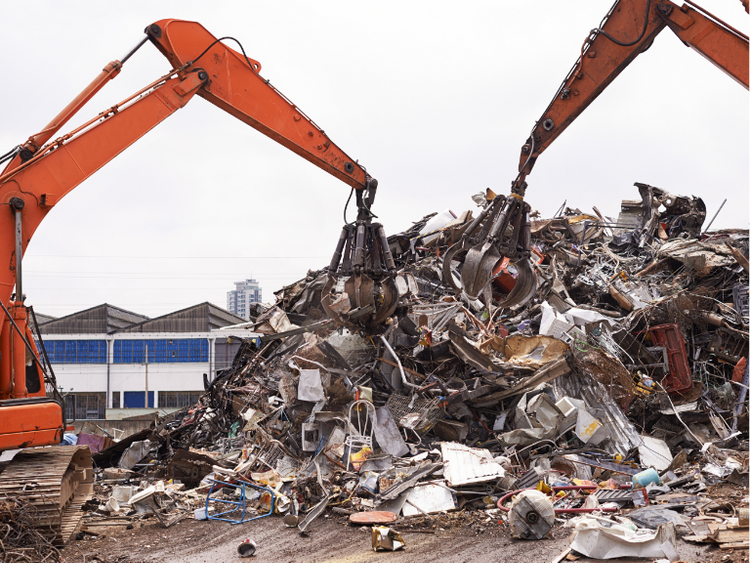Scrap Prices North America

SMU Steel Summit Speaker Mike Marley Forecasting Lower Scrap Prices in August
Written by John Packard
July 19, 2014
Steel Market Update asked one of our Steel Summit Conference speakers, Mike Marley of MetalPrices.com to comment on why scrap prices moved lower as the month of July progressed compared to the early indications of higher ferrous scrap prices during the first few days of the month. Here is his response:
There were a couple of factors. First, steel mills they placed price-to-be-determined (TBD) orders late last month and were assured scrap would be rolling in during the first half of the month. Dealers who thought they could hold out for more money learned that the mills didn’t want their scrap and they (the dealers) started to back down on their demands. The early $15 per ton price hike in Detroit for shredded was not a pacesetter as is sometime the case. It just brought the prices of shredded prices there closer to the higher levels in other regions. Also, David J. Joseph played a low-keyed role unlike the previous month when it was buying early. Joseph’s brokers typically come into the market later than others and try to buy down and that’s what they were doing this month. At the end of last week, they were offering to buy busheling at $10 per ton less than they paid in June. Not sure that they got many takers.
 There was no shortage of prompt industrial scrap as has often been the case in past years. The automakers are busy and are not taking the usual industry-wide week or two vacation shutdowns to retool all of their plants. They close on staggered schedules now and they are making fewer model changes from year to year. I believe this has reduced the amount of downtime required for retooling.
There was no shortage of prompt industrial scrap as has often been the case in past years. The automakers are busy and are not taking the usual industry-wide week or two vacation shutdowns to retool all of their plants. They close on staggered schedules now and they are making fewer model changes from year to year. I believe this has reduced the amount of downtime required for retooling.
Export has been a nonfactor in the market for the past few months, both the bulk cargo demand from the big scrap importing nations like Turkey and the containerized scrap buyers in India, Pakistan and other smaller nations in Asia. That probably will continue. The Turks bought four or five cargoes from the U.S. exporters this week, as much or more from Europe, but the prices are essentially unchanged. This means there is little or no pressure on the domestic market from offshore demand. One indication of this is the lower prices being paid in regions like Philadelphia. No. 1 heavy melt was stable at $335-$340 per ton delivered to the mill whereas it is $360-370 per ton in the Midwest. Shredded is about $15 to $20 cheaper in this region than elsewhere.
Last, it is July and this is the time when several of the smaller electric arc furnace mills usually take downtime for maintenance. That means they bought less scrap this month than they usually do. It is a good time since they have to limit their power consumption on hot, humid days or pay higher costs to the local utilities. July is when they are most likely to see the thermostats climb to 90 degrees and higher. But the supply of their favorite flavors of scrap (heavy melt and shredded) are very good at this time of the year, so that may have eased the pressure on those grades.
Looking ahead, there have been a few small spot market buys by one or two mills at lower prices, but most dealers are resisting steep price cuts. At the same time, most mills see this as soft sideways market now and are content to wait until August. That could mean unchanged to down $10 per ton. But keep in mind they have all the scrap they need for July. Coming in now and buying at, say, $10 per ton lower may be overpaying if the prices drop by $20 in August.
SMU Note: Mike Marley has more than 35 years experience reporting on the ferrous scrap markets in the United States for Iron Age, the American Metal Market, World Steel Dynamics and now MetalPrices.com. We look forward to hearing Mr. Marley’s comments at this year’s SMU Steel Summit Conference in Atlanta on September 3 & 4.

John Packard
Read more from John PackardLatest in Scrap Prices North America

HRC vs. prime scrap spread widens in June
The price spread between HRC and prime scrap widened in June.

Ferrous scrap pricing sideways in June
Ferrous scrap prices in the US have remained stable from May to June.

HRC vs. scrap spread widens over $150/ton in March
The HRC vs. prime scrap spread increased again in March.

HRC vs. prime scrap spread increases in February
The price spread between hot-rolled coil (HRC) and prime scrap widened in February ahead of the implementation of President Trump’s tariffs on steel.
HRC vs. prime scrap spread narrows again in January
The price spread between hot-rolled coil (HRC) and prime scrap continued to narrow in January, according to SMU’s most recent pricing data. While SMU’s average HRC price edged down week over week (w/w), it rose compared to a month ago. The January price for busheling also increased from December. Our average HRC price as of […]
